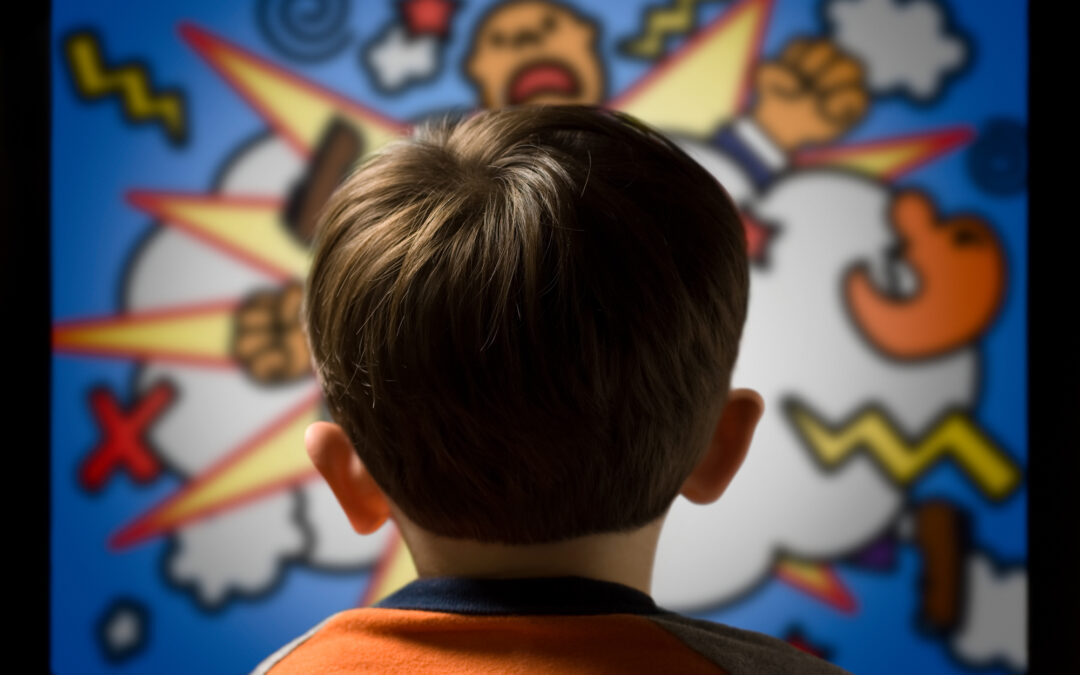Children today are confronted with a baseline awareness of violence higher than most adults can imagine. “Remote violence” refers to exposure to highly violent images and stories, without experiencing the violence first-hand. In essence, this is the increasing awareness children hold that something could happen to them, even if it hasn’t yet. With monthly mass shooting drills in schools, awareness of police brutality against individuals and at peaceful demonstrations, and constant media coverage of physical and emotional violence, it’s nearly impossible for this to not reach a child in some way. It’s crucial that we find ways to talk about it to help them process, ask questions, and reaffirm our commitment to keeping them safe. There is no one right way to have this conversation, but keeping these three tenants in mind can help you create a framework to apply to the situation at hand. I’ve kept this purposefully simplistic; as much as I wish there were a script I could hand you, each conversation, each event, will demand a different response. It’s better to have a conversation, even if it doesn’t feel perfect to you so release the expectation that you’ll know exactly what to say, and focus your efforts on maintaining just these three principles:
- Be developmentally appropriate
- Be honest
- Be regulated
Be developmentally appropriate:
How you talk about events like this will vary widely based on the age and development of your child. A 3-year-old may not need to be told anything, whereas an 8-year-old will likely require a conversation. Try to match the child’s level as closely as possible, and be prepared that they may have witnessed content or conversations what were not developmentally appropriate (overhearing adult conversations, hearing teachers at school, catching a news segment on the bus or seeing a newspaper on the street). Younger children may ask questions in an attempt to understand something outside their normal experience, while older children and teens may not need information or answers to questions as much as reminders of security and support.
Be honest
You don’t need to have all the answers are tie things up perfectly, it’s an unrealistic goal that will leave you feeling like you’ve failed despite doing the best you can. In many ways, telling your child you don’t know something (when you truly don’t) helps them trust what you’re saying and offers an opportunity to seek that information together or process the uneasiness that comes with not knowing. Except in very young children, try to resist the urge to promise safety at all times, or to lie and come up with a reason why scary things won’t ever be part of their experience. Oftentimes children are aware that an adult can’t ensure this, and they’ll wonder what else you aren’t telling them. Instead, focus on the aspects of safety they do have- in you and other trusted adults, in the protocols and procedures of their school and other environments, community resiliency, training of those in positions of protection, etc. Kids need our honesty, but again, a developmentally appropriate version of that honesty.
Be regulated
Out of the three, this is easily the most important. It can be incredibly difficult to manage your own distress while being present for your child. If you feel you aren’t in a place of emotional regulation, wait to have this discussion until you can. For younger children, seeing their parent highly distressed is confusing and scary. For older children, it can put them in a state of overwhelm or lead to a feeling of responsibility to care for their adult’s emotions. Neither of these options offer space to process their own emotions. When we talk about emotional regulation, we don’t mean you need to pretend everything is fine (they’d see through the inauthenticity in that fairly quickly!) This only means that you’re in a place to hold space for the child’s emotions, even when they get heavy. Letting them know you feel the gravity of what’s happened is good, letting that take precedence when they need you for support is what we try to avoid. It’s even ok to engage your child in the coping strategies you use to get to that place of regulation, it will help you be most present for them, and model healthy coping strategies they can use when they were overwhelmed.
If you take one thing from reading this, please know that the specific words you choose in these conversations are significantly less important than how you show up in the conversation. Remember, your goal in these conversations is not to take their fear and pain completely away, only to guide them through it in a way that helps them feel as safe and secure as possible as they navigate a world that can be both scary and beautiful.

When to Worry: Recognizing Signs of Trauma in Your Loved Ones
Over the past several years, there have been numerous traumatic events making news all across the country. From incidents of mass violence to devastating natural disasters, hundreds of thousands of Americans have experienced or witnessed a disastrous or...

6 Reasons Why Yoga Might Be the Missing Link in Your Mental Health Toolkit
We invited our friend, Eve Parker at Simply Yoga, to share this guest blog, which provides information about the positive impact of yoga on a person's mental health and overall wellness. After reading the article, if you’d like more information about Simply Yoga, we...

You Are Not Alone: Finding Support as a Male Sexual Abuse Survivor
On an almost daily basis we hear stories of female sexual harassment and abuse in the media. Sadly, male sexual abuse is fairly common, but the issue is under-reported by the media and society in general.One US-based study found that 1 in 6 boys experience...

All about EMDR as Trauma Therapy
Have you heard of EMDR? Among therapists, it’s all the rage as an up-and-coming, evidenced based approach for trauma treatment. Because it is different than standard talk therapy, we thought you might have some questions. We’d love to help demystify EMDR as a form of...

3 Tips for Managing Technology with Your Teen
Do you feel frustrated when you can’t get your teen’s attention from behind his or her phone or computer? I can relate. With two teenage daughters at home, I have to work hard to preserve some closeness and family time with them. I hear all the research about how...

